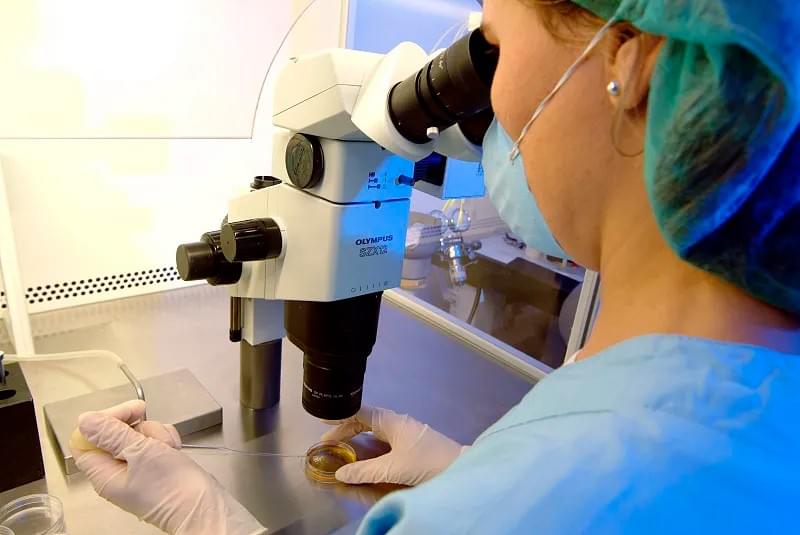In recent years, the field of assisted reproductive technology (ART) has seen remarkable advancements, particularly in the area of surrogacy. One of the most transformative developments within this domain is the integration of genetic screening into the surrogacy process. For intended parents—especially those facing infertility, genetic disorders, or same-sex couples—genetic screening offers a powerful tool to ensure the health of their future child, reduce risks, and make informed decisions. This article explores the role, benefits, ethical considerations, and evolving technologies behind genetic screening in surrogacy, offering valuable insights for individuals and couples considering this path to parenthood.
What Is Genetic Screening in Surrogacy?
Genetic screening in surrogacy refers to the process of analyzing the DNA of embryos created through in vitro fertilization (IVF) before they are transferred to a gestational carrier. This procedure, often known as Preimplantation Genetic Testing (PGT), allows fertility specialists to identify genetic abnormalities, chromosomal disorders, or inherited conditions in embryos. The goal is to select only the healthiest embryos for implantation, thereby increasing the chances of a successful pregnancy and a healthy baby.
There are several types of PGT:
- PGT-A (Preimplantation Genetic Testing for Aneuploidy): Screens for abnormal chromosome numbers, such as those seen in Down syndrome.
- PGT-M (Monogenic/Single Gene Disorders): Used when one or both intended parents carry a known genetic mutation, such as cystic fibrosis or sickle cell anemia.
- PGT-SR (Structural Rearrangements): For individuals with chromosomal rearrangements that could lead to unbalanced embryos.
By incorporating genetic screening into the surrogacy journey, intended parents gain greater control over the biological aspects of conception, even when they are not carrying the pregnancy themselves.
Why Is Genetic Screening Important in Surrogacy?
Surrogacy is often pursued by individuals or couples who cannot carry a pregnancy safely or successfully. However, the emotional and financial investment in surrogacy is substantial, making it crucial to maximize the chances of a healthy outcome. Genetic screening plays a pivotal role in this process for several reasons:
1. Reducing the Risk of Genetic Disorders
For intended parents with a family history of genetic conditions, PGT-M can prevent the transmission of serious illnesses to their child. By testing embryos before implantation, clinics can identify and exclude those carrying harmful mutations, ensuring that only unaffected embryos are transferred.
2. Improving Pregnancy Success Rates
PGT-A helps identify chromosomally normal (euploid) embryos, which have a significantly higher chance of implanting successfully and developing into a healthy pregnancy. This is especially important in surrogacy, where each cycle involves coordination between multiple parties and considerable costs.
3. Minimizing the Need for Selective Termination
Without genetic screening, prenatal tests like amniocentesis or chorionic villus sampling (CVS) may reveal abnormalities later in pregnancy, potentially leading to difficult decisions about termination. PGT allows for early detection, reducing the emotional and ethical burden on intended parents and surrogates alike.
4. Enhancing Transparency and Trust
In international or independent surrogacy arrangements, trust between intended parents and surrogates is paramount. Genetic screening provides objective data about embryo health, fostering transparency and confidence in the medical process.
The Genetic Screening Process in Surrogacy: Step by Step
Understanding how genetic screening is integrated into the surrogacy journey can help intended parents make informed decisions. Here’s a typical workflow:
- IVF and Embryo Creation: Eggs are retrieved from the intended mother or an egg donor and fertilized with sperm from the intended father or a sperm donor in a laboratory.
- Embryo Biopsy: After 5–6 days of development, when embryos reach the blastocyst stage, a few cells are carefully removed from the trophectoderm (the part that becomes the placenta).
- Genetic Analysis: The biopsied cells are sent to a specialized genetics lab for PGT. Results are typically available within 7–14 days.
- Embryo Selection and Transfer: Only embryos confirmed to be genetically normal are selected for transfer to the gestational surrogate.
- Cryopreservation: Unused healthy embryos can be frozen for future use, providing options for siblings or backup attempts.
This process ensures that the embryo transferred to the surrogate has the best possible genetic foundation for a healthy life.

Ethical and Emotional Considerations
While the benefits of genetic screening are clear, the practice also raises important ethical questions. Some critics argue that PGT could lead to "designer babies" or reinforce societal biases against individuals with disabilities. However, most fertility experts emphasize that PGT is primarily used to prevent serious medical conditions, not to select for non-medical traits like intelligence or appearance.
For intended parents, the emotional impact of genetic screening can be profound. On one hand, receiving news that an embryo carries a genetic disorder can be heartbreaking. On the other hand, knowing that affected embryos were identified early can bring relief and prevent future suffering.
Surrogates also play a key role in this process. Ethical surrogacy programs ensure that surrogates are fully informed about the use of PGT and understand that only genetically screened embryos will be transferred. This protects the surrogate from potential emotional distress later in pregnancy.
Advancements in Genetic Technology
The field of genetic screening is rapidly evolving. New technologies are making PGT more accurate, affordable, and accessible:
- Next-Generation Sequencing (NGS): Allows for comprehensive analysis of all 23 chromosome pairs with high precision.
- Non-Invasive PGT (niPGT): Researchers are exploring methods to analyze genetic material released by the embryo into the culture medium, potentially eliminating the need for biopsy.
- Polygenic Risk Scoring (PRS): An emerging area that assesses an embryo’s risk for complex conditions like heart disease or diabetes based on multiple genes. While still experimental and ethically debated, PRS may offer additional insights in the future.
These innovations are expanding the possibilities for intended parents, particularly those with complex genetic histories.
Legal and Regulatory Landscape
The legality and availability of genetic screening in surrogacy vary by country. In the United States, PGT is widely available and commonly used in surrogacy programs. However, in countries like Germany, France, and Italy, PGT is either restricted or prohibited, limiting options for international intended parents.
For those pursuing cross-border surrogacy, it’s essential to work with legal and medical professionals who understand both the destination country’s regulations and the home country’s citizenship and parental rights laws. Proper legal agreements should address the use of genetic screening, embryo disposition, and decision-making protocols in case of unexpected findings.

Who Should Consider Genetic Screening in Surrogacy?
While genetic screening can benefit many intended parents, it is especially recommended for:
- Couples with a known history of genetic disorders
- Women over 35, as the risk of chromosomal abnormalities increases with age
- Individuals who have experienced recurrent miscarriages or failed IVF cycles
- Same-sex couples using donor gametes, to ensure the health of the embryo
- Anyone seeking to maximize the success rate of surrogacy
Even for those without a known genetic risk, PGT-A can improve implantation rates and reduce the likelihood of miscarriage.
Cost and Accessibility
The cost of genetic screening varies depending on the type of test, the number of embryos, and the clinic. On average, PGT can add 3,000–7,000 to the overall surrogacy expense. While this may seem significant, many intended parents view it as a worthwhile investment given the potential to avoid costly complications, failed transfers, or the emotional toll of a high-risk pregnancy.
Some insurance plans now cover part of the cost of PGT, especially when there is a documented medical indication. Additionally, clinics may offer package pricing or financing options to improve accessibility.
The Future of Genetic Screening in Surrogacy
As genetic science continues to advance, we can expect even greater integration of genomics into reproductive medicine. In the future, comprehensive embryo profiling may become standard practice, combining chromosomal screening with assessments of metabolic health, immune compatibility, and long-term disease risk.
Moreover, as public awareness grows and ethical frameworks evolve, genetic screening is likely to become more normalized and accepted as a responsible component of family planning—especially in high-stakes journeys like surrogacy.

Conclusion: Empowering Intended Parents Through Science
Genetic screening in surrogacy is not about perfection—it’s about preparation, prevention, and peace of mind. By identifying potential health risks before pregnancy begins, intended parents can approach their surrogacy journey with greater confidence and clarity. For surrogates, it ensures a safer and more predictable process. And for the future child, it lays the foundation for a healthier start in life.
As reproductive technologies continue to evolve, the synergy between genetic science and compassionate care will remain at the heart of modern surrogacy. For those considering this path, consulting with a qualified fertility specialist and genetic counselor is the first step toward making informed, empowered choices.

For more information on surrogacy programs and genetic screening options, consult with accredited fertility clinics and reproductive law experts in your region. Always seek personalized medical advice before making decisions about your family-building journey.
